.31 Percussion/32 S&W Conversion
feature By: Mike Nesbitt | June, 23
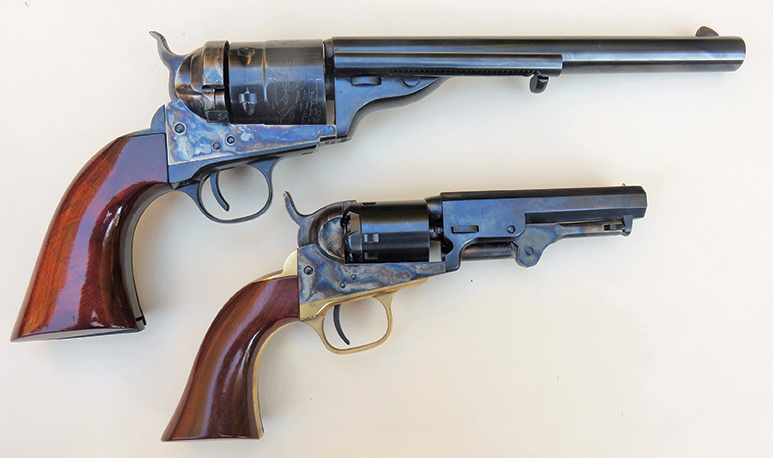
To say the 1849 Pocket Revolver was a success is putting it mildly. More than 300,000 of these guns were made before production ended, along with the end of the percussion era, in 1873. One example of the acceptance of the Pocket Revolvers is found with the Baltimore Police Department that was the first in the country to issue guns to their officers. The guns they issued were the Colt Model 1849.
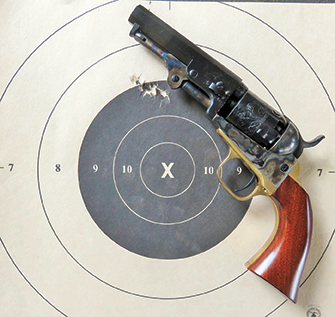
Like other Colt-style percussion revolvers, this 1849 copy has the rear sight as a shallow notch in the top of the hammer. There is another notch at the bottom of the striking face of the hammer and that notch engages a small pin in between the cylinder’s chambers or nipples that will keep the cylinder from rotating when the hammer is lowered over that pin. Those pins make it possible to carry the gun fully loaded and capped with the hammer lowered between chambers or caps. Other Colt-style revolvers that I’m familiar with have those “safety pins” between each of the chambers and, at first, I thought they were simply missing from this 1849 Model. However, there is one “safety-pin” between two of the chambers on this gun’s cylinder.
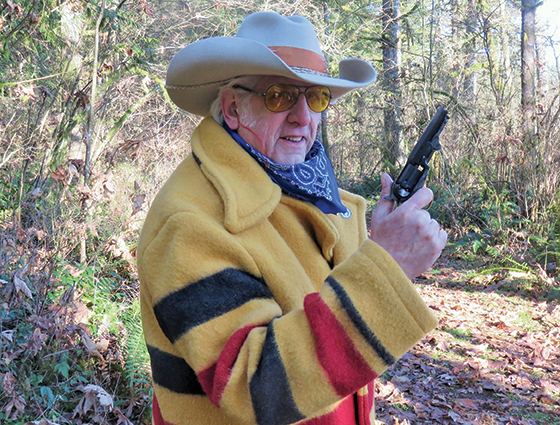
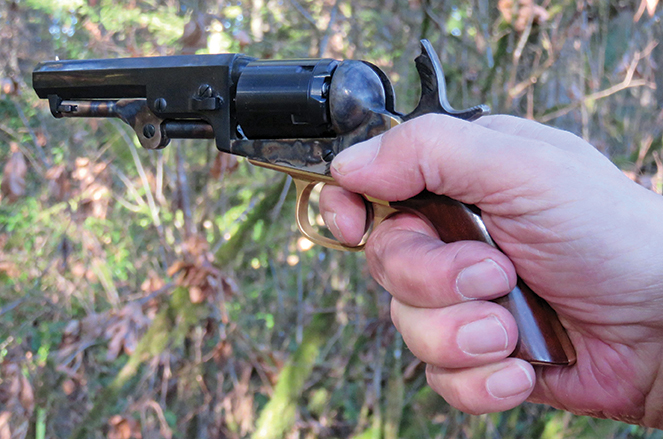
For my first shots, each chamber was loaded with 9 grains, using 3Fg powder. Ramming the balls into the chambers with the rather tiny loading lever was easier than I expected. After all of the balls were seated over the powder in the chambers, some of October Country’s Bumblin’ Bear Grease was used to cover the bullets. That is done mainly to prevent “chain fires” where more than just one chamber gets detonated. Also, never shoot a percussion revolver with loaded chambers but without percussion caps on all the nipples. The percussion caps “seal” those loaded chambers from the back. A chain fire with a revolver usually doesn’t generally do any damage, but it can be exciting.
I took a kneeling position about 10 yards from the target. The first shot, while I was holding at about the bottom of the X-ring, hit the black high at just about 12 o’clock. My second shot doubled the first shot. The third shot just opened the existing double bullet hole a little more; then the fourth shot went into the same tight group. Finally, the last shot went just a fraction of an inch higher and that was the only shot on the target to break into the white.
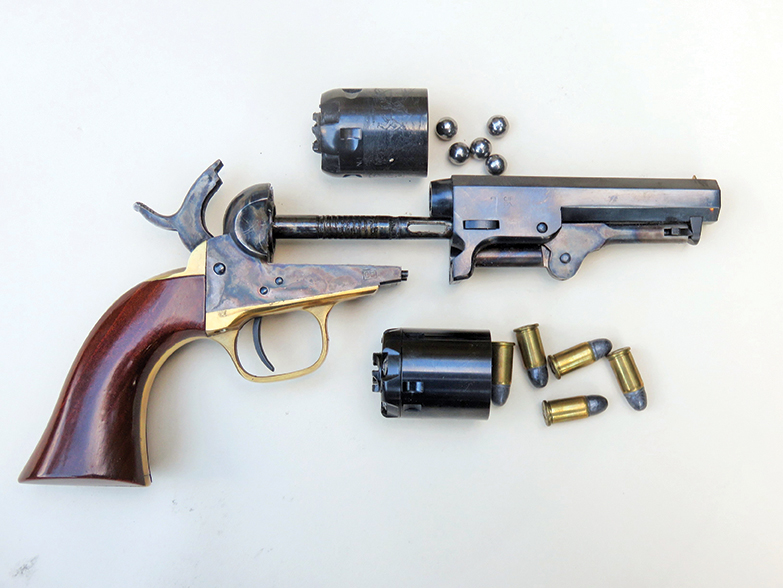
Ballistic Products makes a 0000-size buckshot and that is a .380-inch ball, just about right for those .36 Navy revolvers.
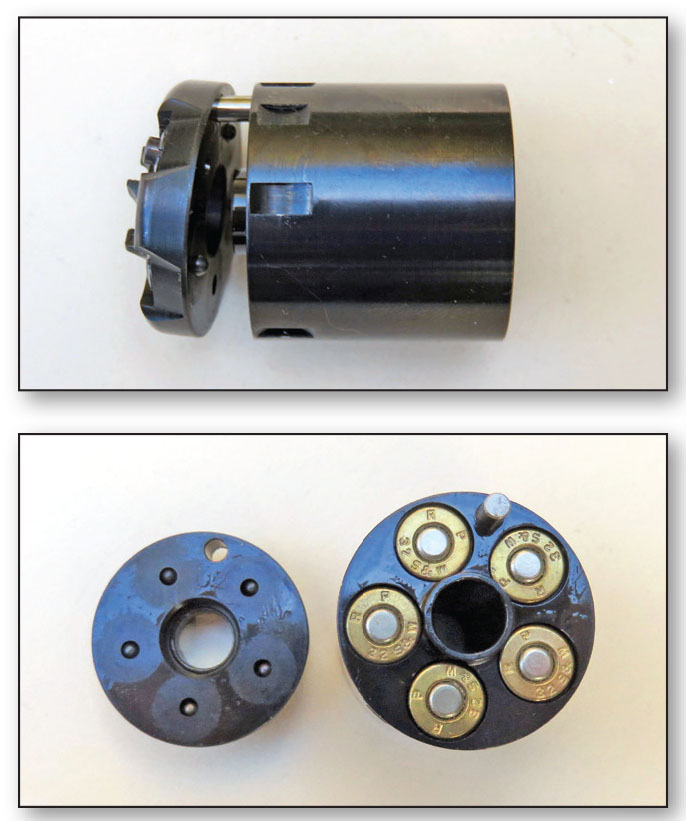
Now for some notes about ballistics. Over the 9 grains of powder went the 0 buckshot balls from Ballistic Products. That’s the load I was able to test-fire over my chronograph in order to see what it was really doing. Five shots were fired over the “chrony” and those were recorded going as slow as 472 feet per second (fps) and as fast as 530 fps. That string averaged a whopping 496 fps, but for the sake of easy math, let’s just call it 500 fps.
Those .320-inch roundballs weigh in at just 50 grains. So, the 50-grain bullet moving at 500 fps carries an energy of just under 28 foot-pounds. That’s just over a third of what a 22 Short carries with its 29-grain bullet moving at about more than twice the speed. This should tell you that if you’re looking for power, you might look someplace else.
Shooting the .31-caliber percussion revolver was, in its own way, a real blast! However, I had my eye on something else for that gun; that was the conversion cylinder made by Howell Old West Conversions and I ordered mine from Buffalo Arms Company. Almost as soon as I ordered that cylinder, it arrived at the mailbox, very good and fast service. The conversion cylinder allows 32 Smith & Wesson (S&W) cartridges to be shot in this little five-shot revolver with no other alterations required. Just change the cylinder to shoot the cartridges or change it back to shoot the gun as a percussion.
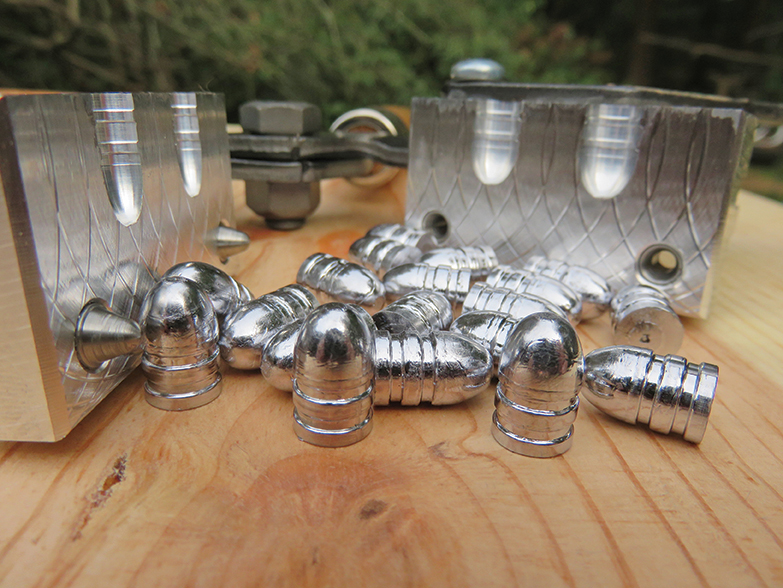
Naturally, some loading tools for the little 32 S&W were also on the list. Lee Precision makes a three-die set for the .32, with a carbide sizing die and they were ordered along with a mould for a 93-grain bullet, also by Lee, No. 311-93-1R. With the lead that I’m using that is rather soft but of unknown alloy, the bullets from that mould weigh just about an even 88 grains.
The suggested diameter for sizing those bullets from the Lee mould is .311 inch, but I had my hopes for something a bit larger, mainly because the suggested roundball diameter for the .31-caliber revolver is .321 inch. So, instead of sizing those little bullets, they were placed in a metal lid from a large jar to be “pan” lubed. Then, to make a “kake kutter,” a 32 Winchester Special case was drilled out, over at Allen Cunniff’s shop, so a brass plunger rod could be run through the case to push the lubed bullets back out. The 32 Special case was resized which, I’m just guessing, would squeeze the mouth of the case down to .316/.318 inch. That should leave a little extra lube on the bullet, but that’s okay.
That metal jar lid is big enough to lube 25 to 30 bullets at a time, which is plenty enough for me, plus that “kake kutter” works very well. The first loading of bullets from the Lee mould was done using the most recommended smokeless powder load, which needed only 1-grain of Bullseye powder. That is a soft-speaking load for sure. A couple of them were fired over a chronograph, generating only about 480 fps.
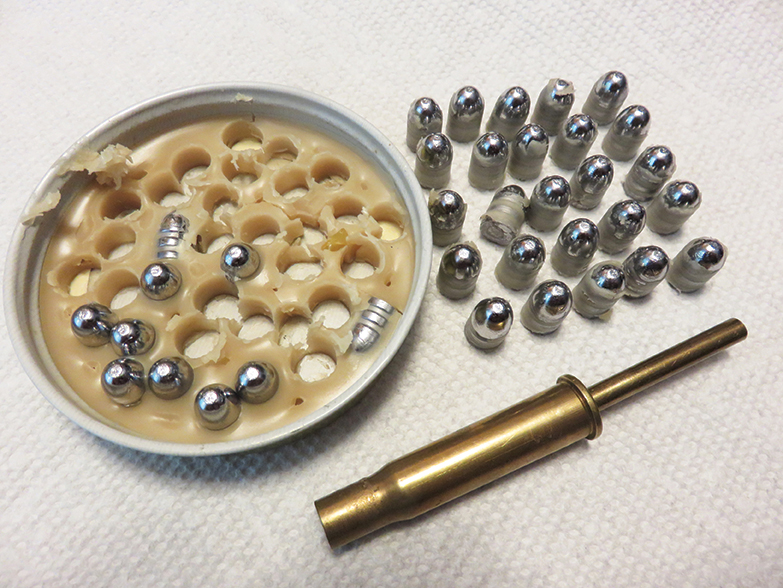
Even the charge of 6 grains was a little too much. That required some compression of the powder while seating the bullets. Plus, you can probably tell what’s coming, compressing with the soft bullets caused the bullets to “expand,” which didn’t allow the cartridges to be inserted in the conversion cylinder. So, those bullets were pulled and replaced with fresh “unexpanded” bullets. Those worked very well and with those loads, it was off to the range we went. Those loads with the 6 grains of Olde Eynsford 3Fg shot with pleasing accuracy.
For my next loading, using black powder in the 32 S&W cases, the amount of powder was dropped to just 5 grains. With that much powder, the bullets can be seated very easily. There is still some slight compression of the powder, so there is no air space, but the bullets do not get expanded during the seating process. The 5-grain loads of black powder certainly fired with more “snap” than the very light loads with Bullseye and with good accuracy, too.
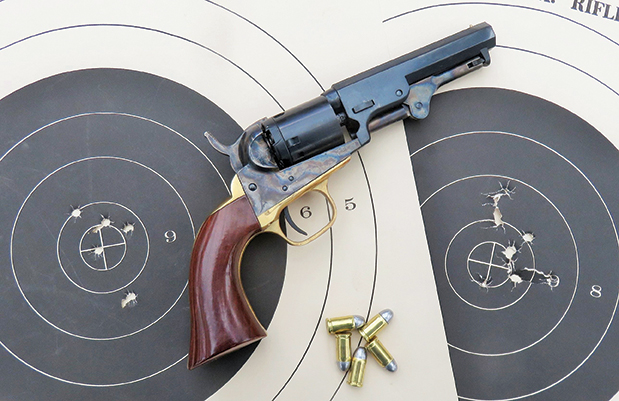
Shooting this small revolver with the conversion cylinder is really a pleasure. In fact, I haven’t used this gun with the percussion cylinder since trying it with the 32 S&W cylinder. What duties this gun will serve for now is rather hard to say, it is primarily a fun gun and shooting it with the light black-powder loads simply makes shooting it even more fun. Historically, there were some conversions for the old Colt .31s, but those mainly focused on using the 32 rimfire cartridges. While using the 1849 Colt copy with the 32 S&W conversion cylinder, we can experience a little of that history and have a lot of fun at the same time.


